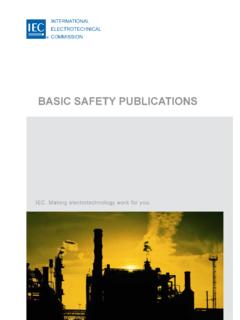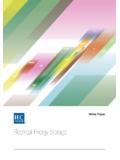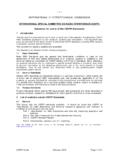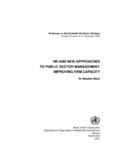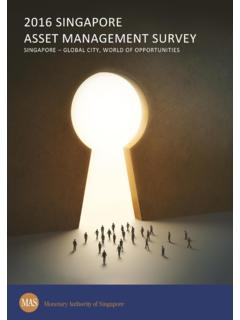Transcription of IEC WP Asset Management:2015-10(en) Strategic …
1 Strategic Asset management of power networks White PaperIEC WP Asset management : 2015 -10(en)Cover photo: Richard Kail/Science Photo Library3 Electricity networks around the world are facing a once-in-a-lifetime level of profound challenges, ranging from the massive uptake of distributed generation devices, such as rooftop solar generation, through to signi cant changes in the control and communications equipment used in the network itself. Power networks in developed nations are struggling with an equipment base nearing the end of its lifetime, whilst those in developing nations wrestle with trying to identify best-practice examples on which to model their operations.
2 Compounding these challenges, there is ever-increasing regulatory and funding pressure being placed on electricity network businesses to justify their management actions and expenditure these challenges, there is great variation around the world on how electricity network companies approach what are arguably their number one challenge the design, maintenance and operation of a large network of electrical equipment. Network companies often take quite different approaches in testing equipment, calculating the lifetime and nancial costs of various equipment maintenance options, and even reporting on the performance of their system.
3 The variety here is hardly intentional it stems from a lack of internationally accepted global standards or guidelines on how to practice Asset management in the electricity network current lack of international standards or guidelines on Asset management for electrical networks will have a signi cant impact on the reliability and future viability of the electricity se standards such as the ISO 55000 series provide general guidance on best-practice Asset management procedures, they do not provide the industry-speci c guidance that is needed given the operational methods and challenges of the electricity transmission and distribution industry.
4 The current situation means that: Network businesses around the world use different metrics to measure and report on the performance of their network. Without a commonly-accepted de nition of ways to calculate (for example) failure rates, it is very dif cult to benchmark across organizations or jurisdictions. There is a lack of consensus on what are best-practice methods for everything from testing the health of a particular item of equipment to prioritizing various Asset management options.
5 This makes stakeholder communication dif cult (see below), and means many electricity network businesses waste time and resources developing their own methods to address a particular problem. This situation is particularly exacerbated in developing nations or in the context of relatively small organizations, who could bene t greatly by simply adopting best-practice methods developed by others. Without worldwide standards on measuring and reporting on electricity network Asset management procedures and performance, broader stakeholder engagement is very dif cult.
6 When a network business cannot benchmark its performance against peers, or demonstrate that it is following industry-recognized best practice, stakeholders such as regulators or funding bodies can struggle to trust the network business s management decisions or appreciate the full depth of challenges summary4 Executive summaryThe present White Paper explores this issue in depth, examining the practice of Asset management in the electricity power network sector and identifying areas of Asset management practice that could bene t from international standards.
7 These include: If common standards for reporting on the age and condition of assets existed, network businesses around the world could gain the con dence and trust of regulators, governments, and the public when staking funding applications based on the age and claimed upgrades of their equipment. Having standardized practices for Asset management could signi cantly increase the trust and transparency around Asset management and investment decisions for all stakeholders in the electricity power network industry, as everyone could refer to independently established guidelines for best-practice Asset management .
8 Having standards for Asset management would allow network businesses to benchmark themselves against other organizations in different jurisdictions or geographies. Standards for Asset management could be used as a communication and education tool to understand and explain the best-practice methods in Asset management , in both developed and developing White Paper was prepared following extensive industry consultation, with 3 international workshops being held around the world, attended by electricity network businesses, equipment manufacturers.
9 Research institutions and other standards organizations. These workshops focussed on identifying current Asset management practices in the electricity power network sector and asking key industry representatives where they thought standards could make a contribution. In addition, 2 questionnaires were sent out to electricity network businesses, examining the current status of their assets (the equipment mix, age, etc.), and how they currently approach the management of these networks in many developed nations face the very signi cant challenge of an aging Asset base.
10 In many nations, electricity network rollout proceeded apace throughout the 1940s to 1980s but has slowed in recent years. Many signi cant items of equipment are now operating close to, or even beyond, their expected retirement many developed nations, the age of the Asset base and the current slow rate of replacement mean it would take hundreds of years to renew all assets. This has signi cant reliability aging equipment problem is not just one of equipment wear it also constitutes a human resources issue, as in many cases the people with the skills and expertise to complete maintenance, or the experience needed to make Asset management decisions regarding this older equipment, have retired from the industry.
